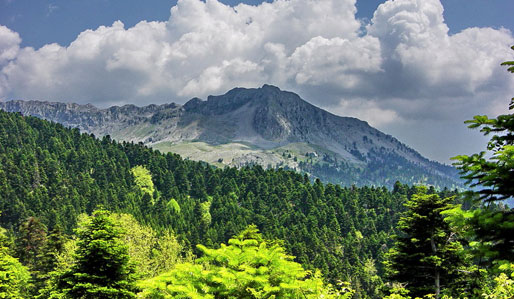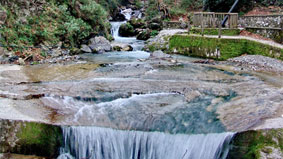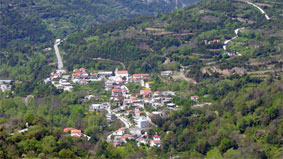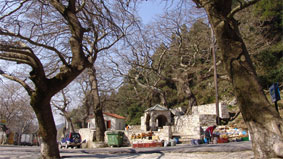
Only a short drive from Athens, Steni offers a spectacular natural environment. A key feature is the river that runs through the village, giving the 43 stone fountains scattered throughout the village crystal clear drinkable water summer and winter. thThe village is naturally decorated by a river that goes through the village. Steni is a destination for all seasons, cool in the summer and beautifully snowy in the winter. Just 9 km from the village is the Dirfis mountain refuge at an elevation of 1150 accessible both by trekking path and dirt road.
The mountain refuge is run by the Greek Mountaineering Club of Chalkis. With a network of tens of kilometres of organized and mapped out hiking trails, hikers can safely wander into the dense forest to reach spots of great natural beauty.
The extensive network of forest tracks has also been used in recent years for mountain and downhill biking. Mountain climbers can bid their skills against imposing peaks of Dirfys (altitude 1743), and Xerovouni (altitude 1453). The enormous rock of Klisourais is also ideal for rock climbing.
The general area also has a lot to offer. After Steni village, visitors can follow the main road which leads to other villages: Stropones, Metoxi and Lamari till they reach the well-known and spectacular Chiliadous beach on the Aegean coast of the island. Framed by an incredible landscape, Chiliadous beach is one of the best beaches in Greece. On both sides of Chiliadous beach, there are several smaller but equally beautiful beaches (TriaNisia, Beach of AgiaIrini, Glyfada).
The municipality of Dirfion is full of natural splendours as well as historical and religious monuments. These include:
• Gorge of Agalis and the cave of Voidokleftra in Loutsa;
• Eria Location in Kathenous with its old church and Roman aqueduct;
• Drakospito of Dirfis in Glyfada;
• Spilaiokklisi of St Kiriaki in Kato Kambia;
• Folklore Museum in Lamari;
• Monastery of Lady Chiliadous;
• Canyon of Chavou (one of the most inaccessible canyons in Greece) in Kambia;
• Carved stone age aqueduct over the canyon of Chavou;
• The Venetian towers in villages Skounteri and Amfitheas;
• Byzantine and post Byzantine churches in the villages of Loutsa, Amfithea, Bounous, Theologos and Mistra
• Old classic water mills
History of the area
The area of Dirfys is known to have been inhabited through most ages known to man. Stone tools and weapons of the Paleolithic and Stone Ages have been found in the area. The Voidokleftra cave, located in the gorge of Agali, has been shown to have been inhabited by Neolithic people. A Neolithic watertank has been located in the village of Glyfada.
It is said that in Ancient Greece, Dirfion -the highest peak of Mt Dirfys - is said to have had a temple devoted to Hera Dirfion. The temple was built to celebrate the wedding of the ancient gods Hera and Zeus. Mount Dirfys was a place of devotion to the goddess Hera. It’s name "Dirfion" or "heavenly" was in reference to the goddess Hera.
The byzantine period left a strong imprint on the region. In the village of Kathenoi, the Byzantine church of the Presentation of Christ still stands. Many byzantine churches have been preserved including the Byzantine church of the Ipapantis of the Saviour in Stropones,and the Byzantine church of Agia Paraskevi in Loutsa. The Byzantine church of Panagia in the village of Theologos, is of particular interest, as it contains a rare icon of St Georgios and St Dimitrios.
The Dirfion region was particularly important in the Greek struggle against the Ottoman empire in 1821. During the Ottoman occupation, the area of Steni was called Kleisoura (i.e. Closure) to reflect its inaccessibility. It served as a base for the Kleftes and Armatoloi (freedom-fighters) of the time. The large rock Karaouli, on top of the village, was used as a watch point to scout the entire region.
On August 15, 1821, an Ottoman officer called Imam Bey, attacked the village by surprise capturing many of the village folk. Those captured were to be transferred to Chalkis but two locals, Kotsos and Hadjisotiriou, managed to ambush the Ottomans at Chamomyla and free the villagers as well as take back the spoils taken.




